Getting a Massage in Japan: Facilities and What to Expect

For visitors to Japan who would like to receive a massage during their trip, we have compiled a list of facilities, information on traditional massage methods such as anma or shiatsu, and cautionary points.
Getting a Massage in Japan
Riding trains and buses and walking around sightseeing spots can sometimes be challenging during a trip. Therefore, some may want to visit a massage facility.
This article introduces massage facilities in Japan, including a shiatsu massage, and what you need to know when getting one.
Table of Contents
1. Japan's Massage Culture and Massage Types
2. How to Get a Massage in Japan
3. Cautionary Points
Japan's Massage Culture and Massage Types
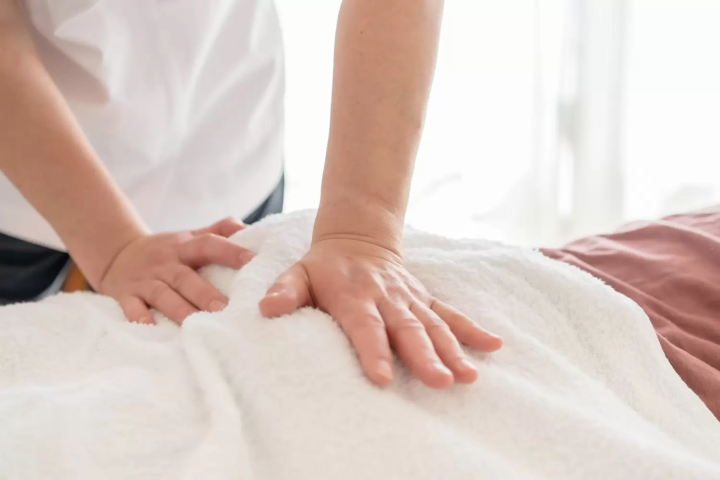
Photo by Pixta
Although Japanese massage has become popular with overseas visitors, some might think it is a procedure in which oil is applied to the skin.
In Japan, a massage is typically conducted with the recipient fully clothed. Various types, such as anma or shiatsu, are performed over clothing. A national license is required to be a practitioner of these two methods.
Those who are not familiar with traditional Japanese massage styles may be confused. Below are the differences between massage, anma, and shiatsu.
1. Massage
Massage as a practice that improves blood circulation and overall health started in Europe. The masseuse uses oil or powder and works from the limbs towards the body center.
Alternatively, Japanese massage does not use oil or powder and is conducted with the recipient fully clothed. Techniques such as rubbing, applying pressure, and tapping are employed to lessen muscle stress.
2. Japan's Anma
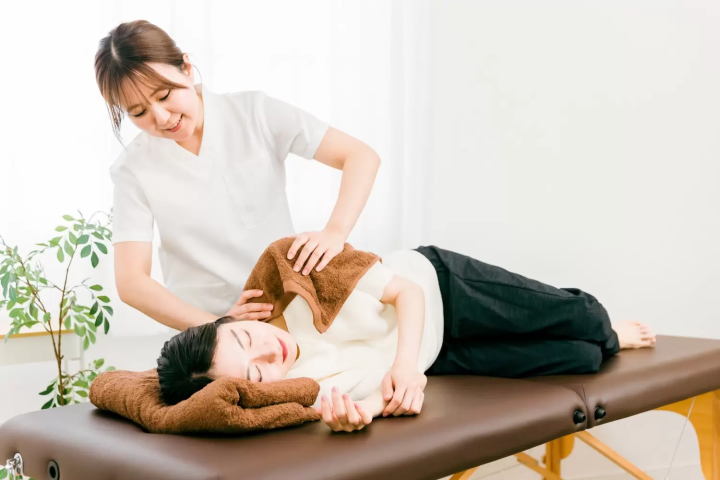
Photo by Pixta
Anma originated in ancient China. The word "an" means "to press," and "ma" implies "to rub." These two techniques loosen muscles and help blood circulation by pressing or rubbing the body over the clothes.
Anma is characterized by stimulation from the body's center towards the limbs.
3. Shiatsu
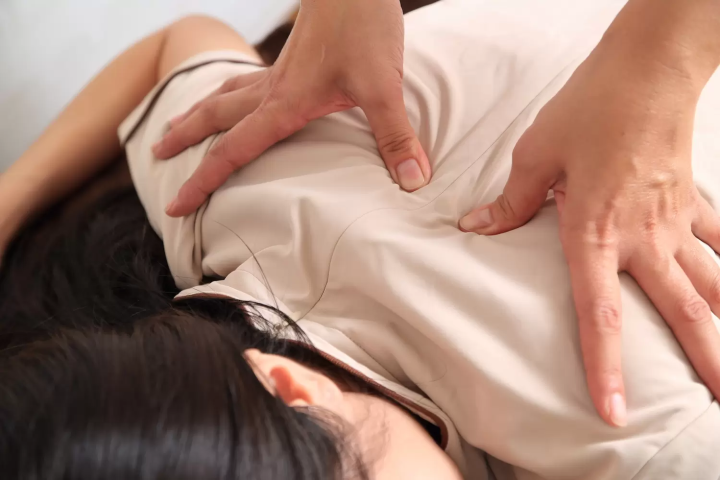
Photo by Pixta
Shiatsu is a massage technique that originated in Japan. It aims to remove muscle fatigue and restore balance to the body.
Unlike a traditional massage or anma, which involves pushing and rubbing with the palms of the hands, shiatsu is characterized by pinpoint pressure applied with the fingers and palms of the hands.
While some may feel slight pain, the pressure is aimed towards the deep part of the body, so primarily, there should be not much sting.
How to Get a Massage in Japan
There are various massage facilities in Japan. Most of them prioritize customers with a reservation or only accept booked clients, so be sure to check in advance.
The following is a list of establishments where visitors to Japan can get a massage.
Hotels and Ryokan Inns

Photo by Pixta
Some hotels and ryokan (Japanese-style inns) offer massage services. A masseuse will come to the guestroom, or a salon will be in the building. Be sure to ask the staff in advance.
Those who want a masseur to come to their rooms should make an early reservation. Since many guests prefer to get a massage before sleeping, the masseurs may be fully booked in the late hours.
Moreover, the salons will also attend to guests with reservations. It is recommended that you book a massage when checking in.
Some hotels even offer a massage package, so choosing such a hotel is an option. Yumoto Fujiya Hotel, located three minutes from Hakone-Yumoto Station, is one such facility.
Their salon offers an original massage, mixing traditional Chinese, Thai, and Japanese methods. It is open from 14:00 to 24:00, and the last guest will be admitted at 23:00. From 19:00 to 23:00, guests can have a practitioner from the local acupuncture and moxibustion association visit their rooms.
Some staff speak English or Chinese, so it will be easy for guests to make inquiries.
Yumoto Fujiya Hotel
Address: Kanagawa, Ashigara-Shimo, Hakone-machi, Yumoto 256-1
Official Website: https://fhr.yumotofujiya.jp/
Spa and Hot Spring Facilities

Photo by Pixta
Spas and hot spring facilities also offer massage services. The menu will vary according to facilities, so be sure to check in advance.
One example of such a facility is Suzuran no Yu, which has one of the largest open-air baths in Kobe. It is located at Arima Onsen, one of Japan's three oldest onsen (hot spring). The facility draws water from 1,100 meters below ground and is known for its dining services.
The salon at Suzuran no Yu offers Japanese massage, oil massage, and reflexology. Guests can have their body, from head to toe, attended to according to various menus. They can also make inquiries in English.
Suzuran no Yu
Address: Hyogo, Kobe, Kita, Yamada-cho, Oubu Aza Myoga 11-1
Official Website: https://suzurannoyu.jp/prices/
Read also
Relaxation Salons
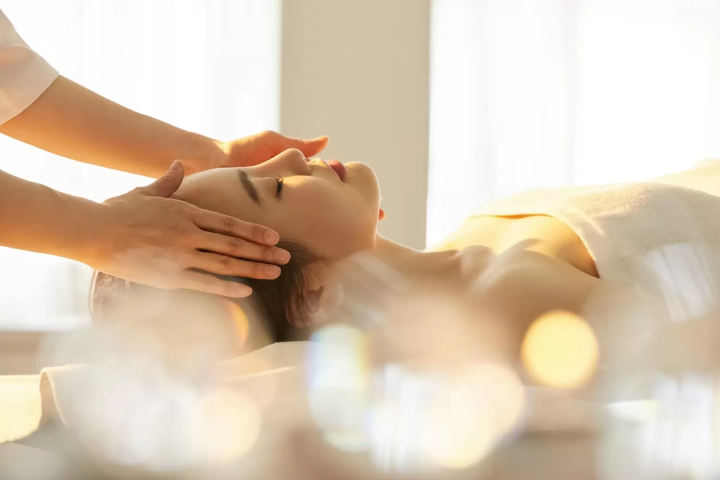
Photo by Pixta
A relaxation salon in urban areas offering various types of treatment is another option.
While a national license is required to be a massage practitioner of anma or shiatsu, the therapists at these salons are certified by the private sector. They may not be able to cure pain or a bad condition, but they will be effective in relieving fatigue.
Wa Spa, located five minutes from Ginza Station in Tokyo, is a facility where visitors can experience Japan through the five senses. It exudes a Japanese aura and offers treatments using domestic materials and oils.
The facility has English-, Chinese-, and Korean-speaking staff members. They also have knowledge of Japanese arts, such as ikebana flower arrangement, tea ceremony, and kodo (appreciation of incense).
This facility is ideal for those looking for a blissful experience of Japanese relaxation.
Wa Spa
Address: Tokyo, Chuo, Ginza 5-10-2, Ginza Miss Paris 5th Floor
Official Website: https://www.wa-spa.jp/en/
Chiropractic Clinics
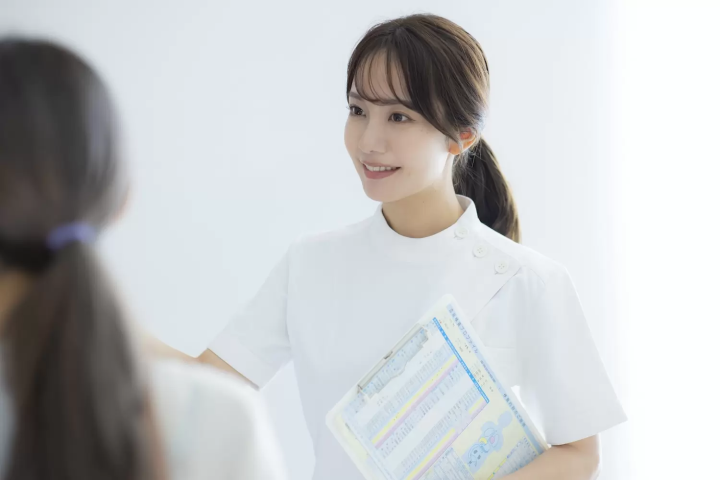
Photo by Pixta
At a chiropractic clinic, you can get a muscle massage that refreshes the body. An osteopathic clinic treats bone fractures, dislocations, and sprains. Therefore, those looking for relief from fatigue should visit a chiropractic clinic.
The therapists at Wabitai, located near Azabu-Juban Station in Tokyo, are government-certified. They combine acupuncture, moxibustion, chiropractic, massage, and Chinese medicine to enhance the human body's natural healing power and adjust the autonomous nervous system.
There are English-speaking staff members, so those who do not speak Japanese need not worry.
Wabitai
Address: Tokyo, Minato, Azabu Juban 1-3-7, Bell Rain Azabu 702
Official Website: https://wabi-tai.com/for-english-speaker/
Cautionary Points
Check for Reservations
Some massage facilities require a reservation for treatment. Other salons that welcome walk-in customers will also prioritize booked clients. It would be wise to make inquiries in advance.
If that turns out to be difficult, staying at a hotel offering a massage package would be another option.
Wear Loose-Fitting Clothes

Photo by Pixta
In Japan, most treatments are done with the recipient fully clothed, so choose loose-fitting apparel. It won't be easy to relax wearing denim or clothes restricting movement. Avoid suits and shirts that are easily wrinkled or expensive attire.
Some facilities offer a change of clothes, so be sure to ask. Also, please don't wear any accessories since they might be damaged during treatment or hurt the skin.
Stay Hydrated
After treatment, be sure to stay hydrated, as this will help remove waste and fatigue from the body. Alcoholic or caffeinated beverages are not suitable for hydration, so drink either hot or cold water.
Heal Your Travel Fatigue with a Japanese Massage
Japan offers a unique massage method, such as anma and shiatsu, performed on fully-clothed recipients. It might be fun to try it during your trip!
Treatments are available at hotels, ryokan, onsen facilities, or relaxation salons. Most places prioritize booked clients, and others operate on a reservation-only system, so make an early inquiry.
Read also
Main image by Pixta
Written by Kakutama editorial team
This is the official account of MATCHA's editorial department. Our articles feature useful travel information for visitors to Japan, from how-to guides to recommended places to visit.

































![[2026 Edition] FORMUAL 1 JAPANESE GRAND PRIX Information](https://resources.matcha-jp.com/resize/720x2000/2025/10/05-245984.webp)


![[2025 Update] Namba's spectacular illuminations! "Namba Hikari Tabi" with approximately 1 million shining lights](https://resources.matcha-jp.com/resize/720x2000/2025/12/12-252825.webp)